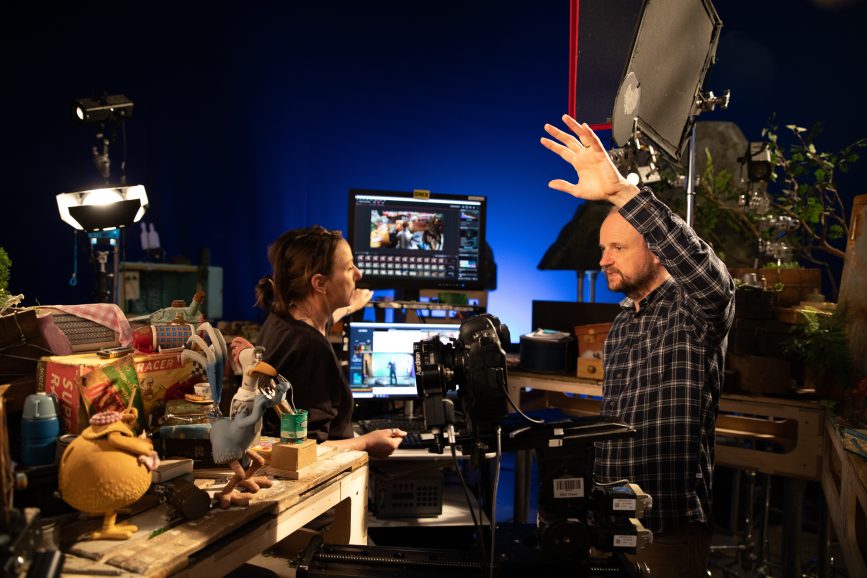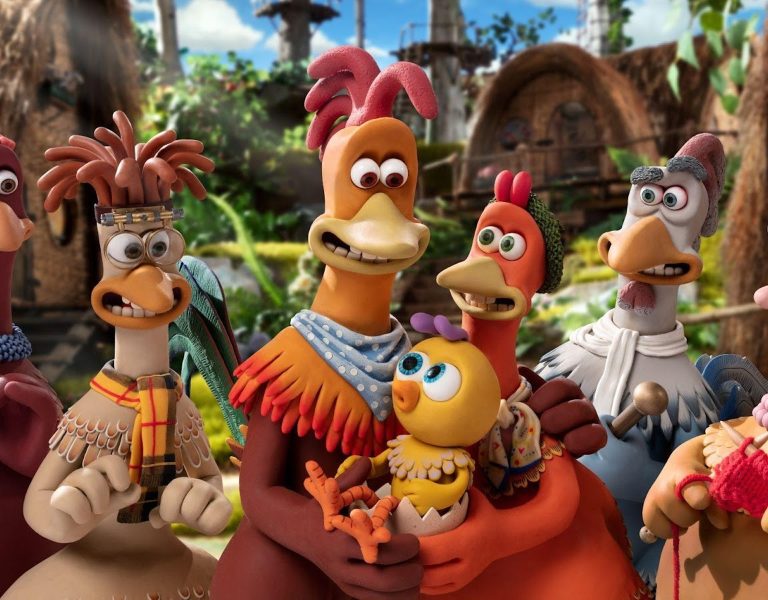RULING THE ROOST
Over 20 years since the original Chicken Run clucked up a fuss on the stop motion scene, its long-awaited sequel – in production for three years – highlights the magic of this time-consuming filmmaking technique.
Some feature films shoot for three months. Charles Copping’s most recent project, Chicken Run: Dawn of the Nugget, was in production for a little over three years. That’s just one of the reasons that stop motion is a demanding discipline, but Copping’s experience includes enough of the greats – including perhaps the greatest stop motion feature – that it’s hard to imagine anyone more qualified.
“It’s going to be thirty years ago in the spring that I came into Aardman to work on A Close Shave,” Copping remembers, “and I’ve been on pretty much every major Aardman stop frame production since then. Chicken Run was quite a big stepping stone for me. It was the first stop frame feature film and in many ways it’s still the benchmark – the highest grossing stop frame animated film of all time! I was a camera assistant on the second unit, and from 1999 onward I’ve been lighting. I was director of photography on the very first episode of Shaun the Sheep – there’s 130 episodes on that, and feature films.”

Copping’s involvement in Dawn of the Nugget began as 2019’s A Shaun the Sheep Movie: Farmageddon was wrapping. “Sam Fell (director) was in the building getting ready. I spoke with him and found we were very much on the same page about how it could be – to do justice to the original but also take it forward creatively.”
With every frame such a huge investment of time, planning was key – and not just from an animation point of view, as Copping goes on. “I was keen to get a very comprehensive set of colour script images together. For every establishing shot in every scene of importance there was an image to refer to. All those decisions which were made months before we started shooting flowed through from the original colour script.”
Ultimately, Dawn of the Nugget would involve 45 units working simultaneously. “It’s a big ship that’s under sail,” as Copping puts it. “Sam was very keen to set it up with a few key creatives that he was directly connected to – myself, Matt Perry the art director, John Biggins the VFX supervisor. The three of us were a conduit for basically everything to our teams. We were very reliant on our teams. On the floor, most of the units were taken by the lighting camera people – but I kept a few for myself!”

The film was shot – frame by frame – on Canon EOS-1D X Mk. III cameras. “We were on the 1D X Mk. I for all of the Shaun features and it’s such a reliable workhorse,” Copping says. “We looked at mirrorless cameras but nothing really matched up to the 1D X Mk. III in terms of reliability and consistency. We’ve also got a huge range of prime lenses, Nikon primes converted by a company in Japan. We buy them second-hand and some of them are quite old. Over the years we’ve gradually accumulated more and more. Optically they’re absolutely beautiful.”
Aardman’s chickens are typically a little under a foot tall, while humans exist in two different scales. As Copping explains, “one of the major complexities was scale. We had chicken scale so the chickens were big enough to animate, then interior human scale which was a tiny bit bigger than the chickens. Exterior human scale exists because the exteriors would be enormous at the interior human scale. So, there were some shots when we were layering together three shots across three units and they had to tie together seamlessly.”
Executing a camera move in a stop motion production necessarily involves motion control, and Copping’s crews used several different approaches. “We’ve got small, in-house pan-and-tilt heads, we’ve got very large pan-and-tilt heads on which we can attach tracks. We have a couple of Animoko rigs for basic 3D moves but then we’ve got three Milos which enable us to do really ambitious, flowing moves.”

Copping’s approach to lighting is traditional. “We use a lot of tungsten light. One of our absolute staples is the [Altman] Micro Ellipse, a small profile light. We do have LED equivalents, which are very close to achieving what a Micro Ellipse does, but we have these beautiful old tungsten lights that are still completely fit for purpose. Particularly, for the chicken island set I was very keen that it had that direct connection to the original Chicken Run. Gel choices, the tungsten lights, everything we used needed to be familiar. That familiarity was really important.”
With even those exterior-scale sets taking up a lot of inevitably limited studio space, Dawn of the Nugget made the carefully considered choices to digitally generate larger areas. Copping’s caution is clear: “Obviously the most important thing is that the stop frame aesthetic is pure, and it looks like it’s all in front of camera. But we wanted to expand the world out beyond the footprint we had on the studio floor. So, for the first time we went into set extension and background characters, particularly for a couple of sequences – funland, and the compound exterior.”
One press screening saw Chicken Run: Dawn of the Nugget projected superbly at the new cinema complex in what was Battersea Power Station, where an audience involving a lot of young people seemed to have a very good time. Copping’s memories are just as fond: “I had such a connection to Chicken Run, so it was a lovely full-circle. It was a case of drawing together all those threads. Chicken Run: Dawn of the Nugget was a culmination for me personally – an amalgamation of everything that went before.”











